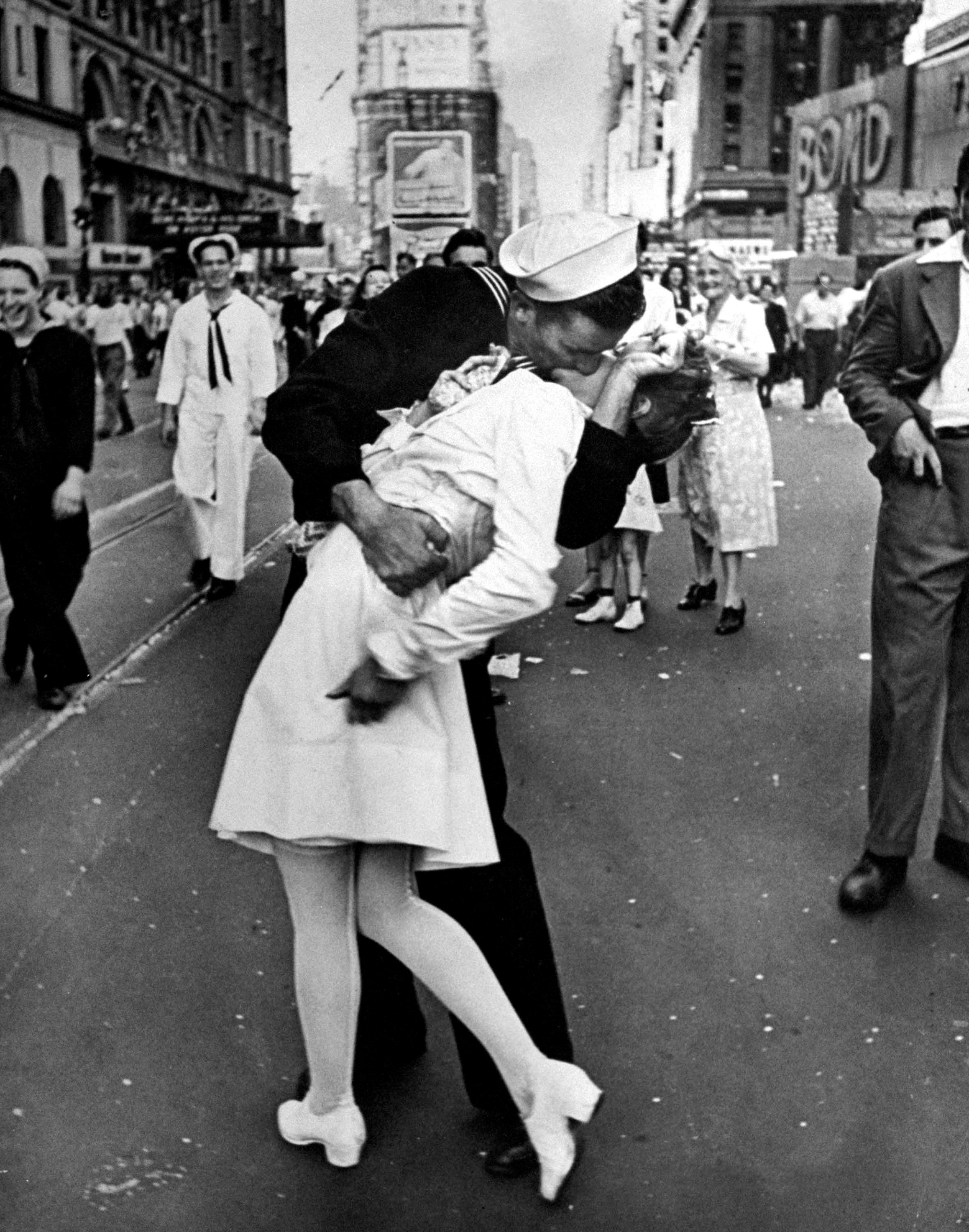Exhibition Review: Life Magazine and the Power of Photography
VJ Day in Times Square ©LIFE Picture Collection
Written by Melia Chendo
Copyedited by Chloë Rain
Photo Edited by Tania Flores
Life Magazine and the Power of Photography opened at the Museum of Fine Arts in Boston on October 9 as a lens into the overlooked. This exhibition invites viewers to reconsider some of the most popular and revolutionary images LIFE published in their weekly editions from 1936 to 1972. These images framed a great deal of America’s recognition of international politics and culture throughout much of the 20th century. In this exhibition, LIFE’s photo-essay arrangements are critically examined from the perspective of a new sociopolitical age, offering unprecedented insight into the distinct dangers of contemporary media and the complexity of its construction. The arrangements reveal the unseen foundations of powerful narratives formed by the magazine, illustrating how photography significantly influences public political discussion, and exposes the roles of racialized and gendered hierarchical structures within the American media industry.
Audience watches moviewearing 3‑D spectacles (1952), J.R. Eyerman. © LIFE Picture Collection
Life Magazine and the Power of Photography displays images of some of the most pronounced historical events of the 20th century from a distinctly American cultural perspective. The intersectionality of nationalism, war, and industrialization is depicted in iconic portraits and landscapes, and a perceptible sense of movement centralizes the body of work exhibited. The capitalist demand to achieve– to surpass limits unsurpassed by humanity before– pronounces itself paradoxically among the industrialist character of various images; a distinct tension is present in the contrast of vigor and mechanical uniformity. Active photographs of a subject crouching above a flame burner (Margaret Bourke-White, Flame Burner Ann Zarik), soldiers traversing through the sea on D-Day (Robert Capa, Normandy Invasion on D-Day), and the American flag waving on the moon (Vintage NASA photograph of the Apollo 11 moon landing) are overwhelmed by a blaring haste.
Vintage NASA Photograph of the Apollo 11 ©LIFE Picture Collection
At the same time, still-life landscapes of towering, concrete, phallic civilization– including a cover photograph by Margaret Bourke-White– possess a strong urgency in their silence. Stroboscopic image of intercollegiate champion gymnast Newt Loken doing floor leaps by Gjon Mili seems to stand out as a particularly strong representation of the emergence of capitalism and its embodiment. The photograph is dynamic both in its framing and its focus; the active subject appears everywhere in the space they are occupying all at once, becoming functional yet boundless– technological yet human. Similarly, an image from Peiping by Henri Cartier-Bresson captures the palpable contrast of a single man and the massive load of furniture he is wheeling behind him. As he looks forward into the street beyond him, this figure becomes driven and impossible. The idea of the industrial “machine” as both a technological advancement and a human semio-capitalist value visibly manifests itself in the tension of the collection.
Blast furnace cleaner Bernice Daunora ©LIFE Picture Collection
The exhibition also features the works of 3 contemporary artists– Alexandra Bell, Julia Wachtel,and Alfredo Jaar– that critically examine narratives constructed by visual media sources. Alexandra Bell’s screen prints and Julia Wachtel’s new commission powerfully deconstruct the influence of media structures. Alfredo Jaar’s work titled Life Magazine, April 16, 1968 reinterprets a LIFE Magazine photograph taken of the enormous crowd at Martin Luther King’s funeral. Jaar focuses on the racial profile of the group pictured by mapping out the Black and white viewers with black and red dots, respectively. The overwhelming mass of black dots calls attention to the scarcity of the red– the unforgivable, eerie absence of white allies. His multimedia collection also involves an immersive exhibit focused on the effects of the Rwandan
Fort Peck Dam Montana ©Life picture collection
genocide in 1994 and the lack of its coverage by the media. The Silence of Nduwayezu invites viewers into the gaze of an orphaned child that witnessed the brutal murder of his parents; an image of his eyes locked into the camera is copied into a seemingly endless array of film prints scattered atop a light table. Confronted by the intimacy of this gaze, the audience looks into the tragedy of unrecognized yet permanent history– the forgotten.
to view more of this exhibition visit here.












